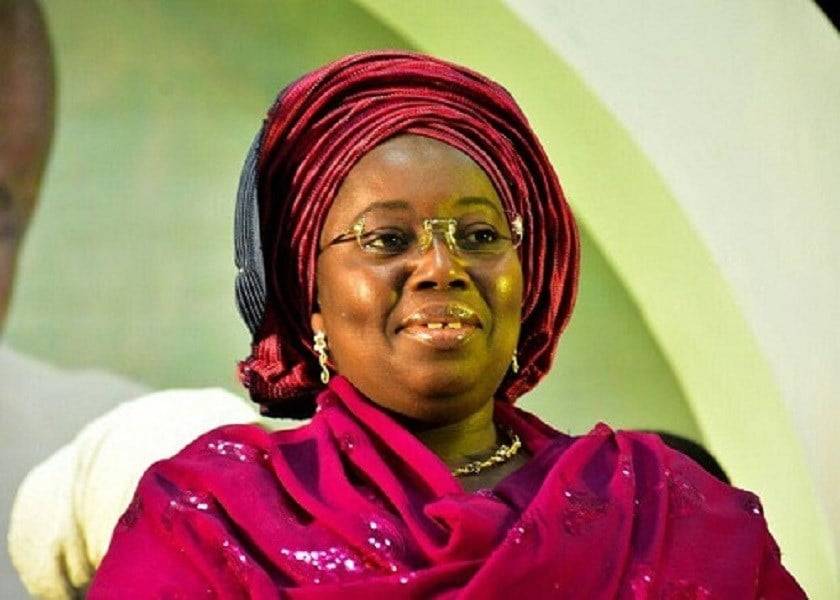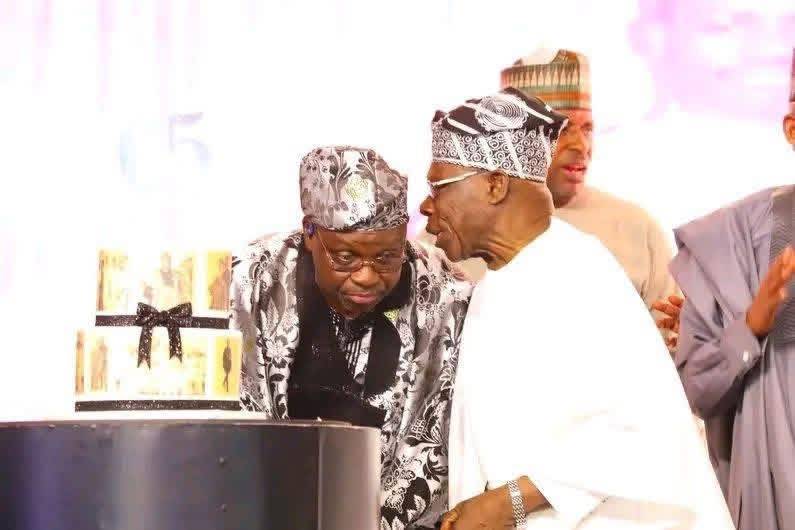Text of the lecture delivered by Adeyinka Kotoye, SAN, at the 2024 Law Week of the Ijebu Ode Branch of the Nigerian Bar Association.
The lecture will be divided into three sub areas as shown in the topic and at the end of the exercise, we will be able to see how several actors at the bar, in the past, had used the instrumentality of the law to influence the society. We will also highlight, how those of us, who are the current actors at the bar, can and should use the instrumentality of the law to influence our immediate society, especially now that there are so much uncertainties.
The Law
Contrary to the general opinion, that the first set of laws, were as handed out to Moses at Mount Sinai and as are contained and/or illustrated in the Old Testament, I am of the humble view, that the terrestrial as we know it now, was actually brought into being by a decree. Irrespective of the religion or philosophy that we subscribe to, the story of creation is nearly similar in all the narratives. The commands as are contained in Genesis 1, starting from verses 3 to 14, are actually in the form of a decree. By specific commanding instructions, God commanded light, into being, at verses 6 and 7, separated what we now know as the earth from the sky, at verse 9, decreed water to come into existence and at verse 14, decreed day and night to come into being. Throughout the gamut of Genesis 1, we see a single individual decreeing things into being, including human beings and at Genesis 2 verses 16 and 17, God gave a prohibitive order of what Adam and Eve should eat and what they should not eat. That is, as I said earlier, the first incident of a law maker at work.
This narrative, is similar to what we have in the Torah, as well as the Hadith, where under the Islamic religion, the laws and sayings of the Prophet Mohammed (SWT) have been codified. It is also part of what forms the tenet of the African Religious System. The Ifa Corpus, ie the “ejiogbe”, the Ogun Injunctions, the Obatala Prohibitions and Admonitions, are all predicated on the philosophy of “Dos” and “Don’ts”, taboos etc. They might be informal, but they represent a set of lexis pursuant to which a society is organised, administered and governed. In the early chapters of Genesis, we see God organising the first written or known society/community. This appears to me, to be the diverging points with those who believe the Evolution Theory and those who believe in the Big Bang Theory. Whichever Schism you choose to believe, one thing is constant; there was a community and/or a society.
Evolution Theory
The Evolution Theory said man evolved from apes. Apes and other forms of higher mammals lived a communal life in a community as a society. They had laws that regulated their conduct. The existence that was brought into being by the Big Bang Theory, in whatever form it might be, also operated in a communal setting, a form of a society. They had laws, rules and regulations, even though they weren’t so codified and well laid out. Therefore, laws, codes, statutes, injunctions, regulations had been part of human existence from time immemorial. The first set of codified laws, at least as the theologians have made us to believe in this part of the world, is as contained in Exodus Chapter 20 verses 2 – 17 and they are what is called “The Ten Commandments”. In our traditional setting, our laws as are contained in the various proverbs, taboos, prohibitions, practices, “ise”, “ewo”, etc, and the essence most importantly, is to either prohibit the doing of a thing and/or give consequences for the doing of such a thing. For instance, the Yoruba saying, “Enitoba she nkan ti enikan o sheri, oju e a ri nnkan ti oju enikan o ri ri”. Meaning, if you attempt to do the outlandish, you will suffer the great consequence.
Fair Hearing
We also have our own form of Fair Hearing. The saying –“A gbo ejo enikan da, agba osika”, is rooted in the Latin Maxim – äudi altarem partem”. This is what has informed all the various sets of laws, right from the days of the canonical laws, whence the Roman Laws are derived from and which form the basis of our present set of codified laws historically. Whether we are talking about the various constitutions, written and unwritten, the bills of rights, the several conventions, the idea is always rooted in how the society intends to organize itself, govern itself, administer itself and relationship with each member of the society.
Afortriori, whether in the field of Medicine, Engineering, Administration, Politics, Education, Teaching, Business or any other form of human endeavor/activity, law does not only play a prominent role but is the actual bedrock of such an activity. This is why law was the first profession in the Bible. Adam was the first advocate in Genesis 3 verses 9 – 12, when he advocated and exonerated himself from the sin committed with his wife and probably, this was one of the reasons why he got away with a lesser punishment unlike Eve that was banished into a life of perpetual servitude.
In Deuteronomy, Moses also appointed the first set of Judges, and at Proverbs chapter 21, verse 15, the author said those judges derive joy when they do justice.
The Bar
Under this subhead, we will examine the evolution of the English Bar, the Canadian bar, the American bar, the Australian bar, the South African Bar as well as the Nigerian Bar and illustrate the contribution of some of the actors in the various Bar to the development of their different societies.
These six Bars, were chosen randomly because of their relative historical linkage and background to the English bar. They all are, also common law jurisdiction. With the slight exception of the South African Bar, all the others had their early actors trained as English lawyers most especially the first known lawyer in Nigeria, late Christopher Alexander Sapara Williams, who was enrolled to practice on the 30th of January, 1888.
The English Bar
The evolution of the English Bar is deeply intertwined with the development of its legal system, reflecting changes in society, governance, and the law itself. Its early development could be traced to the medieval period. The term “Bar” in the real legal context is often traced to the medieval court rooms. This is as described by the legal historian Sir William Holdsworth in his seminal work “A History of English Law” (1903-1912)1. The origin of the English Bar dates back to the 12th and 13th centuries when the common law began to develop. The establishment of the King’s courts (Curia Regis) necessitated the need for professional legal representation. The various Inns of Court, which emerged in the late 13th and early 14th centuries, played a crucial role in the education and regulation of lawyers. The four main Inns—Inner Temple, Middle Temple, Lincoln’s Inn, and Gray’s Inn—became the training and licensing bodies for barristers.In the 16th to 18th centuries, the need to formalise and regulate the Bar became more apparent due to the increase in the activity of members of the Bar. Therefore, during the Tudor period, the legal profession became more formalised.
The Inns of Court developed a structured system of legal education, including readings, moot courts, and dining requirements. By the 16th century, the distinction between barristers (advocates) and solicitors (agents who prepare cases), became more pronounced. Barristers were called to the Bar by their Inns after completing their education and pupillage2.These reforms continued in the 19th and 20th century. Legislations such as the Judicature Acts of 1873-1875, which reorganised the court system and aimed to simplify legal procedures came into existence. Such regulatory framework which sought to establish the legal profession were also put in place.
Bar Council
The formation of the General Council of the Bar (Bar Council).in 1894 marked a significant step in professionalising and regulating barristers. The Bar Council set standards for practice and discipline within the profession. However, becoming a barrister still required membership in an Inn of Court and completion of the Bar examinations and pupillage.In the 20th century, modernisation and inclusion became the order of the day.
The Sex Disqualification (Removal) Act 1919 allowed women to become barristers, and the first woman was called to the Bar in 1922.
In the 1960s and 1970s, several reforms aimed at increasing accessibility and diversity within the legal profession came into being. For instance, the Bar Council introduced numerous initiatives to promote equal opportunities and address discrimination and this continued till the 21st century.
Canadian Bar
The history of the Canadian Bar is a fascinating journey reflecting the evolution of its legal system, shaped by colonial influences, constitutional developments and societal changes. Its early development could be divided into both the Colonial Era and Pre-Confederation Era. Like the Nigerian legal system, the Canadian legal system partly took its origin from the English common law, while also some other parts especially those colonised by France, adopted the French civil law.
The Canadian legal system is divided into Upper Canada (Ontario) and Lower Canada (Quebec). Upper Canada was influenced by the British legal traditions and early legal practitioners in Upper Canada were often trained in England. They were admitted by the Law Society of Upper Canada, established in 1797 to regulate the legal profession and maintain professional standards, while Lower Canada retained the French civil law system following the British conquest in 1763.
The Law Society was pivotal in shaping the early legal profession in the province. For instance, the confederation and legal unification which took place between 1867 and the 20th century, led to the formation of several law societies. After Confederation in 1867, the Constitution Act of 1867 (formerly known as the British North America Act) established Canada as a federal dominion. Each province established its own law society to oversee the regulation of legal practitioners.
Law Society of Upper Canada
The Law Society of Upper Canada (now the Law Society of Ontario) continued to play a significant role, and similar bodies were established in other provinces. In Quebec, the Barreau du Québec, established in 1849, continued to regulate the profession post-confederation, maintaining the distinct civil law tradition of the province.
However, the legal profession underwent a process of unification, with the emergence of national legal bodies and standards.
Federation of Law Societies of Canada
The establishment of the Federation of Law Societies of Canada (FLSC) in 1926 was a significant step towards creating uniform standards and fostering cooperation among provincial law societies. Each Canadian province has its own Bar association and law society responsible for regulating the legal profession within its jurisdiction. Provincial Bars oversee admission to the legal profession, professional conduct, and disciplinary matters. The early 20th century saw a movement towards standardizing legal education and admission requirements across Canada.
Law societies began to require formal legal education, moving away from the apprenticeship model that was prevalent in the 19th century. By the mid-20th century, the legal profession in Canada had become more structured and standardised. The National Committee on Accreditation (NCA), established by the Federation of Law Societies of Canada (FSLC), assesses the qualifications of foreign-trained lawyers and Canadians with non-Canadian law degrees, ensuring they meet Canadian standards. The legal profession saw increased professionalization, with the requirement of law degrees from recognised universities and successful completion of bar examinations becoming standard across all provinces. Professionalisation of the bar led to the adoption of standardized licensing examinations and continuing legal education requirements 8, with a growing emphasis on Continuous Professional Development (CPD) for practicing lawyers.
Law societies across Canada mandate CPD hours to ensure lawyers remain competent and up-to-date with legal developments. Specialisation within the legal profession has increased, with many lawyers focusing on niche areas of law. This has led to the formation of specialised legal associations and certification programmes, enhancing the expertise and service quality within the profession. There is also an increase in diversity and inclusion. The modern Bar in Canada is increasingly focused on promoting diversity and inclusion within the profession. Initiatives by law societies and legal organisations aim to address historical inequities and ensure that the legal profession reflects the diversity of the Canadian society. Efforts to improve access to justice and provide legal services to underserved communities have also become central to the mission of law societies across the country.
American Bar
The history of America’s Bar is a rich tapestry of constitutional principles, legal precedent, and institutional development. The legal profession in America traces its roots to the colonial period, where legal practitioners often received informal training through apprenticeships or by studying law books imported from England.
The American legal profession was heavily influenced by English legal traditions. Many early American lawyers were trained in England or learned the law through apprenticeships with practicing lawyers.
The legal profession was not highly formalised, and the requirements to practice law varied widely among the colonies.
The American Revolution and the establishment of the United States led to the development of new legal institutions and principles. Influential documents such as The Declaration of Independence (1776)12 and The Constitution of the United States (1787), including the Bill of Rights and subsequent amendments were ratified. After the American Revolution, there was a push to develop a distinctly American legal system. Law schools began to emerge, and the first law professorship was established at the College of William & Mary in 1779.
The formation of Bar associations played a significant role in setting standards of professional conduct thereby regulating the profession, promoting legal education, and providing networking opportunities for lawyers.
State governments began to regulate the legal profession more closely, setting requirements for admission to the Bar and standards of professional conduct. This contributed to the professionalization of the legal profession.
New York City Bar Association
The first bar association, the New York City Bar Association, was established in 1870.
The American Bar Association
The American Bar Association (ABA) was founded in 1878, providing a national organisation to oversee the profession.
State Bar associations began to implement formal licensing requirements, including Bar examinations, to ensure the competency and ethical conduct of lawyers.
South African Bar
The evolution of the South African Bar is also marked by its historical context, from colonial influences to the modern-day system. Its early development can be traced to the influence by Roman-Dutch law, introduced by the Dutch settlers of the Dutch East India Company during the Dutch colonial period in the 17th century. It was informal, with few professional legal practitioners and no formal legal education within the colony.













